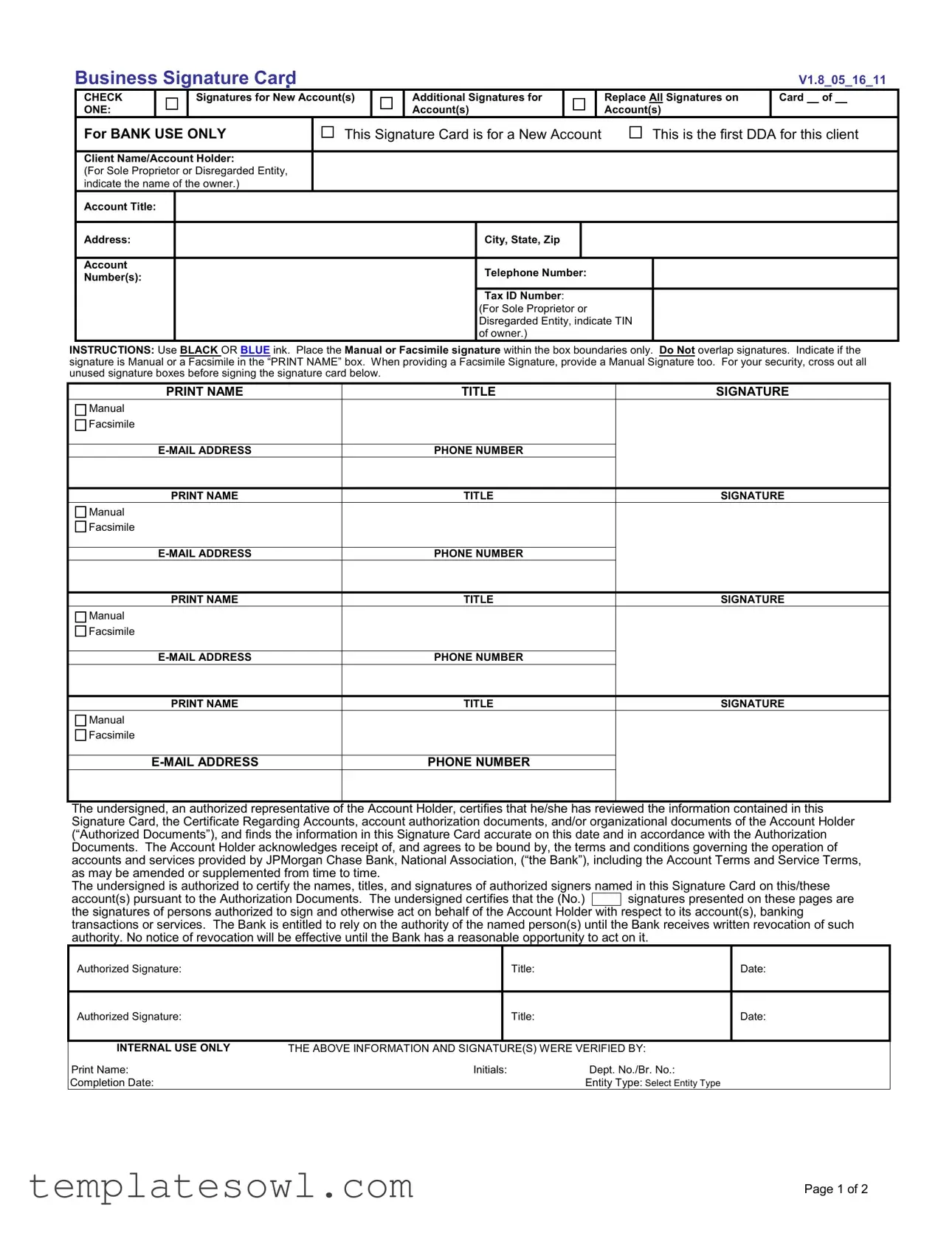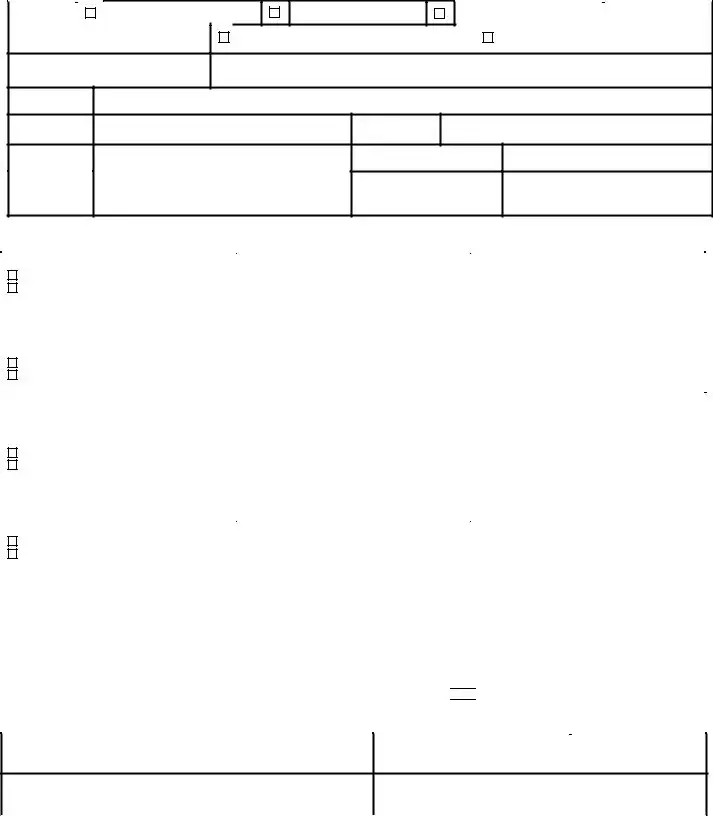Filling out a Business Signature Card form can seem straightforward, but many individuals make errors that may cause delays or complications. Understanding common mistakes can help ensure a smoother process when opening a new account. Below are nine frequent pitfalls to avoid.
1. Failing to Use the Correct Ink Color: The form specifically instructs users to utilize either black or blue ink. Using other colors can lead to processing issues or the need for resubmission.
2. Overlapping Signatures: Another common error is overlapping signatures in the provided boxes. Signatures must remain within the designated space to be valid. Overlapping can compromise clarity and authenticity.
3. Neglecting to Cross Out Unused Boxes: For security reasons, it is imperative to cross out any unused signature boxes. Failing to do so may raise concerns and create complications for the bank.
4. Not Indicating Signature Type: Each signature must be categorized as either a manual or facsimile signature in the “PRINT NAME” box. Without this designation, the bank may hesitate to accept the signatures.
5. Omitting Initials or Signature Reviews: Review of the signature card and organizational documents is crucial, and the authorized representative must certify that the information provided is accurate. Omitting this step may compromise the integrity of the application.
6. Inaccurate Tax ID Information: Entering incorrect tax identification numbers is a significant mistake. This number is vital for verification and must reflect the owner’s official information.
7. Missing Contact Information: Providing thorough contact information, including phone numbers and email addresses, ensures the bank can reach representatives quickly. Leaving this out can hinder communication and problem resolution.
8. Poorly Written Names: Clearly printing names is essential. Illegible handwriting can lead to confusion and further complications in processing accounts.
9. Ignoring Internal Use Sections: Some might overlook the internal use sections of the form, thinking they are not relevant. However, ensuring all parts of the form are completed contributes to a complete application and facilitates quicker processing.
By paying attention to these common mistakes, individuals can enhance their chances of a smooth and efficient application process. Each detail matters, and careful completion of the Business Signature Card form is crucial for establishing a professional banking relationship.



 signatures presented on these pages are the signatures of persons authorized to sign and otherwise act on behalf of the Account Holder with respect to its account(s), banking transactions or services. The Bank is entitled to rely on the authority of the named person(s) until the Bank receives written revocation of such
signatures presented on these pages are the signatures of persons authorized to sign and otherwise act on behalf of the Account Holder with respect to its account(s), banking transactions or services. The Bank is entitled to rely on the authority of the named person(s) until the Bank receives written revocation of such 